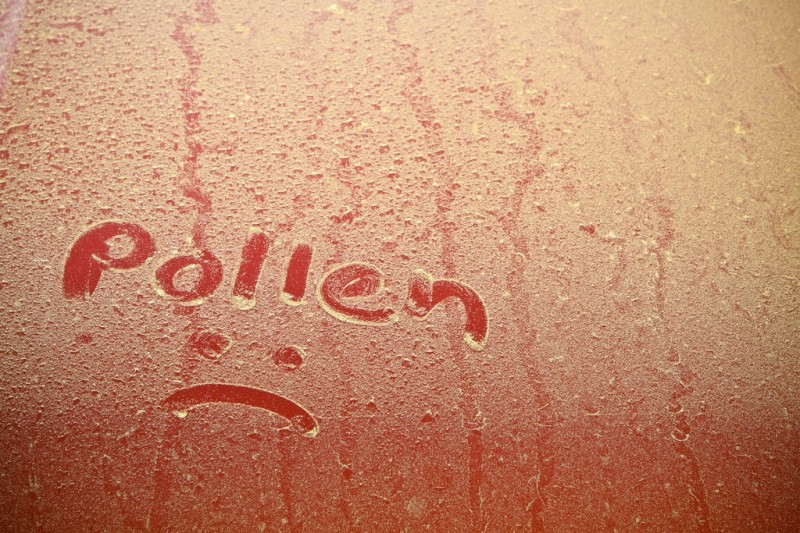Date Published: 28/02/2020
ARCHIVED - Misery ahead for allergy suffers as gota fría storms cause record pine pollen levels in Murcia
ARCHIVED ARTICLE 
The yellow dust is more than a nuisance for an increasing number of allergy sufferers
Go to your doctor if you are struggling with allergic reactions to pollen, it's a common problem on the Mediterranean coast and doctors are used to treating pollen allergies here.
Over the last couple of weeks readers in numerous parts of the Region of Murcia have commented that there appears to be more of the annual yellow pine pollen in the air (as well as on their vehicles and patios) this February than in other years, and data produced by the Spanish Society of Allergology and Clinical Immunology (Seaic) appears to back up the impression with conclusive evidence.
Pine pollen is a considerable nuisance for those who like to keep their balconies and patios clean, but of course the effects are far more serious for allergy sufferers, and the signs are that the two gota fría storms last September and December are making this a sneezier early spring than is often the case in Murcia. The two storms led to there being more rainfall in Murcia in 2019 than in any other year so far this millennium, and in consequence the amount of pollen now being released by pine trees is the highest for at least 8 years.
 The peak measurements of conifer pollen in Murcia have reached 555 grains per cubic metre, the highest figure recorded by Seaic since 2013, and the regional capital was on red alert for pollen for a whole week earlier this month. Cartagena was on maximum alert status for three days, and already the total for the first two months of 2020 is the highest for any year since 2013 despite data being available only until 18th February.
The peak measurements of conifer pollen in Murcia have reached 555 grains per cubic metre, the highest figure recorded by Seaic since 2013, and the regional capital was on red alert for pollen for a whole week earlier this month. Cartagena was on maximum alert status for three days, and already the total for the first two months of 2020 is the highest for any year since 2013 despite data being available only until 18th February.
Conifer pollen is only the fifth most important type in terms of allergy sufferers in Murcia, although the numbers have risen sharply in recent years due in part to there being large numbers of trees in and around new residential areas such as Montepinar in the outskirts of the city of Murcia. More bad news for these patients is that the problem is likely to continue well into the spring unless there is significant rainfall as there are many other plants which cause allergic reactions, olives, surprisingly, being amongst the worst.
If you do have an allergic reaction to any of the vegetation anywhere in the region, go to your doctor; Murcia has one of the highest allergy rates in Spain but also has one of the best medical facilities for allergies in Spain and doctors are well used to treating allergic reactions. Don´t suffer with sneezing, there are plenty of ways to treat allergic reactions and improve the quality of life for those who suffer them.
Follow Murcia Today on Facebook to keep up to date with all the latest news, events and information in the Region of Murcia and the rest of Spain: https://www.facebook.com/MurciaToday/








 The peak measurements of conifer pollen in Murcia have reached 555 grains per cubic metre, the highest figure recorded by Seaic since 2013, and the regional capital was on red alert for pollen for a whole week earlier this month. Cartagena was on maximum alert status for three days, and already the total for the first two months of 2020 is the highest for any year since 2013 despite data being available only until 18th February.
The peak measurements of conifer pollen in Murcia have reached 555 grains per cubic metre, the highest figure recorded by Seaic since 2013, and the regional capital was on red alert for pollen for a whole week earlier this month. Cartagena was on maximum alert status for three days, and already the total for the first two months of 2020 is the highest for any year since 2013 despite data being available only until 18th February. 








